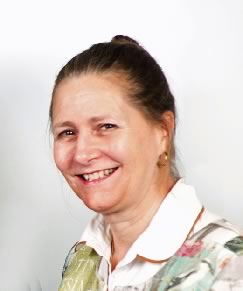Celebrating 100 years of women dental professionals
Professor Pat Reynolds
Where did you qualify? And what year?
- Guy’s Hospital (Dentistry) 1977
- UMDS (United Medical and Dental Schools) Guy’s & St Thomas’s (Medicine) 1984
What attracted you to dentistry?
- Practical subject with a Scientific Basis
- Able to become an independent practitioner
- A caring profession serving society
What are your current responsibilities in the profession?
- Professor Emeritus advising over educational research, locally and globally
- Supervision of PhD and Master’s students
Pat’s story
You are always asked as a child, what do you want to be when you grow up? When I was two I told my Godmother that I wanted to go to university. At school I wanted to be an inventor, but with a practical inclination and wishing to be independent and self-sufficient, dentistry seemed a natural solution. I qualified BDS at Guy’s Hospital in 1977. Residential Oral Surgery House jobs followed, when to succeed in the specialty, you needed a medical qualification. During the medical course at Guy’s I worked in dental practice.
After working my way up to Registrar and Senior Lecturer in Maxillofacial Surgery for 20 years, I had the opportunity to undertake a PhD. The inventor could finally be liberated. I developed a laser device to test the subliminal effects of laser energy on cells. Laser light certainly had an effect, but I was more taken by the advent of the digital age. Powerpoint, for me, revolutionised the boring lecture. Email was just beginning, and mobile phones were still unwieldy devices. I had become a clinical academic.
Teaching was a major part of my activities, and the students lapped up the new technologies that enabled their learning. To learn more, I undertook a Masters in Open and Distance Education at the Open University. It was entirely online, and was completed in my spare time. This was before educational qualifications became mandatory for clinical lecturers. It was a pivotal point that started part two of my career. I moved into an educational role at King’s College London, where I became a Senior Lecturer in Flexible Learning. I put the Dental Therapeutics course entirely online using the new virtual learning environments, against some considerable opposition in 1998. But with the support of my mentors, Sir Ian Gainsford and Dame Margaret Seward, who encouraged my multimedia developments, I began getting grants for educational research that justified this advance.
The international European programme, DentEd (Dental Education) introduced me to many new colleagues globally, before easy long-distance communications were possible, and many became lifelong friends. Together we developed a new Flexible Learning Platform with apps, before apps were invented, and a robotic system using haptics (the sense of touch) to teach dentists practical skills. We gained funding to successfully complete these award-winning educational research projects. In 2007, I was awarded a Chair in Dental Education. To continue our collaborative work, an annual international Colloquium provided a forum to discuss advances in a free and open way, unhindered by prejudice of Higher Education systems still buried in medieval culture. This Colloquium in now in its 15th year.
So where has my story reached? I have visiting appointments in Australia and Italy, and am an Emeritus professor at King’s were I continue to supervise students and advise over future directions. So I went to university, I invented things, but all from starting out in Dentistry. Now I follow my students’ successes and look forward to their brave new worlds in the new digital era.
What has been your most memorable achievement in the profession?
- Two large innovative educational research projects, HapTEL (Haptics in Technology Enhanced Learning) and IVIDENT (International Virtual Dental School) completed on time and within budget.
- Students who have gone on to greatness
- International network of like-minded colleagues who meet at an Annual “Innovations in Education” Colloquium, now in its 15th year.
What advice would you give your younger self on qualifying?
Follow your star, consider higher education, and the variety of opportunities that dentistry can afford to achieve a rounded and satisfying career.
Which of your mentors have influenced you the most?
- Sir Ian Gainsford who supported and promoted my forward looking educational innovations and was a wise counsellor.
- Dame Margaret Seward who understood the challenges that women face even in the 21st Century. She went the extra mile to support me personally.
How have you used mentoring throughout your career?
- To support and inspire students at undergraduate and postgraduate levels
- To bounce off ideas to my own mentors and mentees
onal network of like-minded colleagues who meet at an Annual “Innovations in Education” Colloquium, now in its 15th year.
What advice would you give your younger self on qualifying?
Follow your star, consider higher education, and the variety of opportunities that dentistry can afford to achieve a rounded and satisfying career.
Which of your mentors have influenced you the most?
- Sir Ian Gainsford who supported and promoted my forward looking educational innovations and was a wise counsellor.
- Dame Margaret Seward who understood the challenges that women face even in the 21st Century. She went the extra mile to support me personally.
How have you used mentoring throughout your career?
- To support and inspire students at undergraduate and postgraduate levels
- To bounce off ideas to my own mentors and mentees